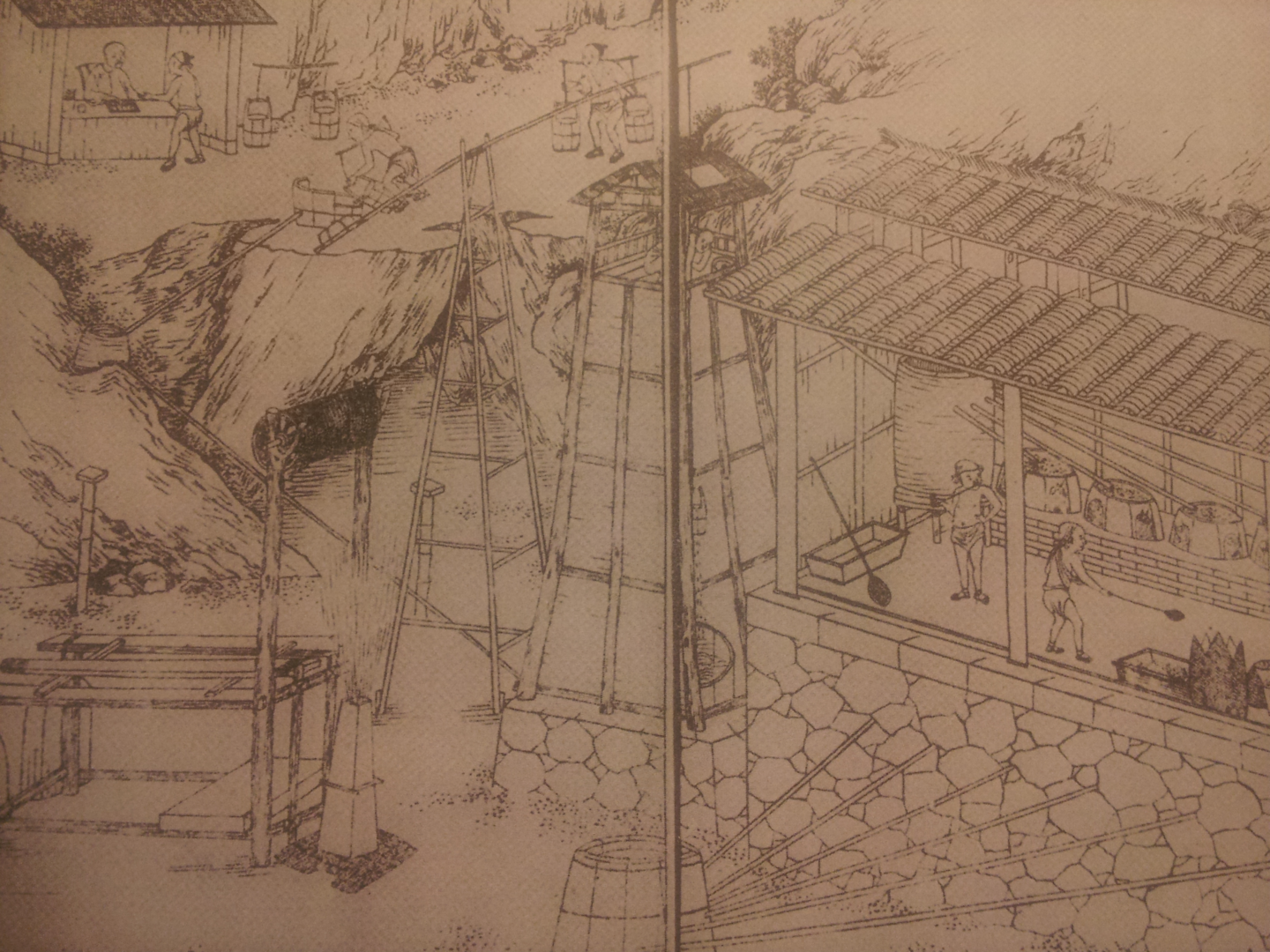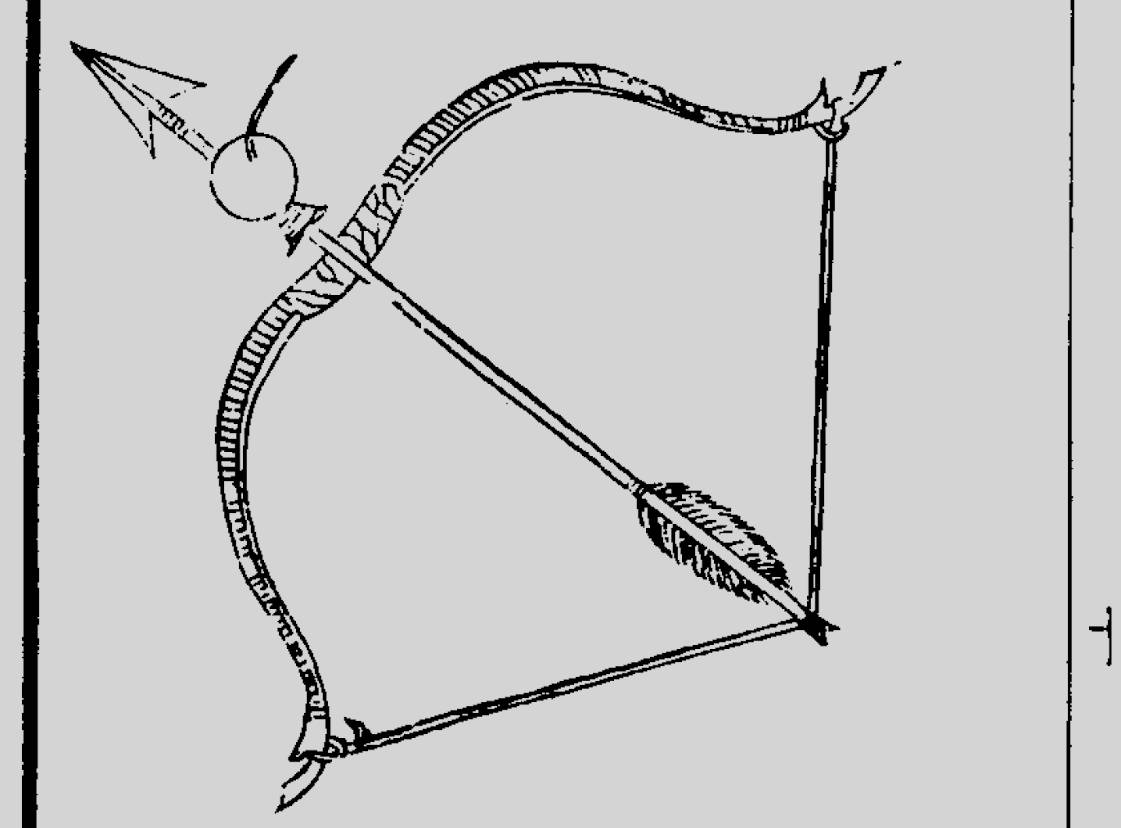Cutting Edge
It's easy to fall into the trap of thinking that just because people lived in the past, they were primitive or unadvanced. On the contrary, it all depends on where one looks. Many examples of inventions or technological marvels throughout ancient history were shockingly ahead of their time, with some almost fitting more in the modern age.
Carbon Steel
Africa originated and advanced many processes, including metallurgy. Around 300 BC, the Haya people of western Tanzania were among the earliest—if not the first—to use carbon steel. They achieved this through ancient blast furnaces that could get as hot as 1,800°C. Along the same lines, Earth’s oldest civilization was the first in many other fields.
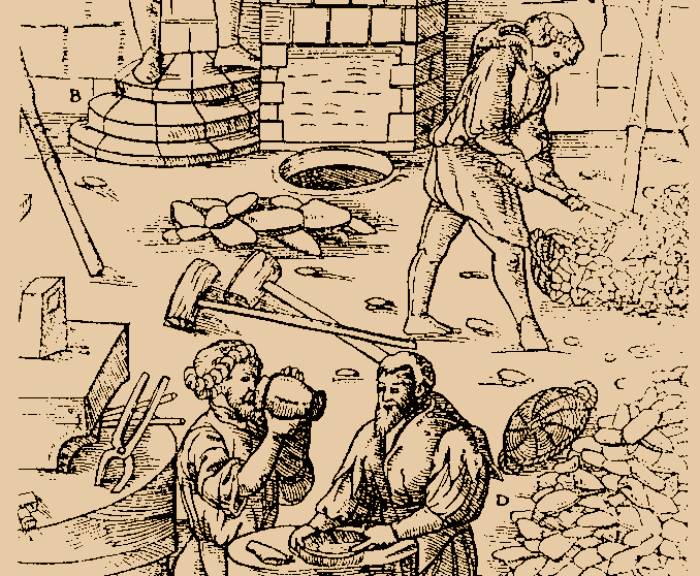 Georgius Agricola, Wikimedia Commons
Georgius Agricola, Wikimedia Commons
Cuneiform
Over the long course of history, many cultures have invented their own versions of writing. However, the earliest known development was that of the Sumerians toward the end of the fourth millennium BC. Their cuneiform writing consisted of symbols, often written on clay slabs, and would endure as a writing system for several millennia. Of course, what is writing without something to write on?
 Bjørn Christian Tørrissen, CC BY-SA 3.0, Wikimedia Commons
Bjørn Christian Tørrissen, CC BY-SA 3.0, Wikimedia Commons
Papermaking
While Egypt used papyrus for writing as early as 2900 BC, actual papermaking didn’t occur until much later in China. Historians have long credited a 2nd-century official named Cai Lun with making the first writing paper from fishing net and plant fibers. Naturally, the inventions of writing and paper would lead to more sophisticated research.
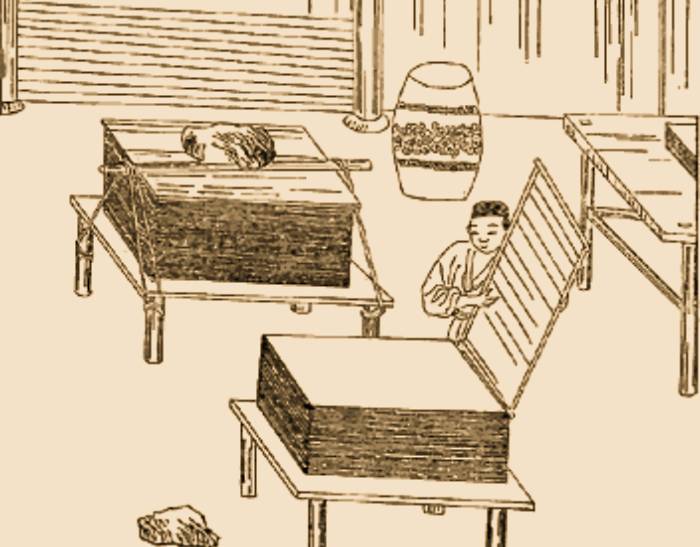 Unknown Author, Wikimedia Commons
Unknown Author, Wikimedia Commons
Seismoscope
In AD 132, Chinese scientist Zhang Heng created the first seismoscope, a bronze urn with eight dragons around its top and corresponding toads at the base. Records said it not only detected earthquakes but also their direction, as when one of the dragons dropped a brass ball into the frog below, it indicated where the quake was moving.
 Thank you for visiting my page, CC BY 2.0, Wikimedia Commons
Thank you for visiting my page, CC BY 2.0, Wikimedia Commons
The Antikythera Mechanism
The latest Indiana Jones film portrays this mechanism as created by the Greek inventor Archimedes to calculate space-time anomalies. In reality, as the original analog computer from around the 2nd or 1st century BC, it predicted regular astronomical events and its connection to Archimedes is only one possible theory. Of course, this wasn’t the only ancient scientific device.
 Marsyas, CC BY-SA 3.0, Wikimedia Commons
Marsyas, CC BY-SA 3.0, Wikimedia Commons
Astrolabes
Although the astrolabe became a popular tool in the Middle Ages, its origins lie further back—and remain under debate. It’s thought to have first appeared in ancient Greece either in the 2nd century with Ptolemy or with Hipparchus around 100 BC. The design was a flat disc with multiple layers, wires, and engravings that could map the stars.
 Matthew Paris (1200-1259), Wikimedia Commons
Matthew Paris (1200-1259), Wikimedia Commons
The Compass
Many civilizations have developed compasses or other forms of navigation, but the first magnetic compass came from China around 200 BC. This original version utilized the naturally magnetic lodestone, either tied to a string or made to float in water, which they called the “South Pointing Fish”. However, this wasn’t China’s only directional tool.
 Relammik, CC BY-SA 3.0, Wikimedia Commons
Relammik, CC BY-SA 3.0, Wikimedia Commons
The Raised-Relief Map
Cartographers in ancient China developed the raised-relief map to detail geographical features and elevation in 3D, possibly as far back as 200 BC. Speculated to have originated in the Qin Dynasty, a famous example was also created using rice in AD 32. Of course, alongside navigation, the ancient world had its own version of transportation.
 Jerzas, CC BY 3.0, Wikimedia Commons
Jerzas, CC BY 3.0, Wikimedia Commons
Wheeled Wagon
The invention of the wheel revolutionized humanity, occurring between the 5th and 4th millennia BC in Mesopotamia. Without this, the first wheeled transport wouldn’t have been possible just a few hundred years later. Several Mesopotamian pictographs depicted these as wheeled wagons, but they weren’t the only revolutionary vehicles.
 Denis Bourez, CC BY 2.0, Wikimedia Commons
Denis Bourez, CC BY 2.0, Wikimedia Commons
The South-Pointing Chariot
As one sixth-century account states, China’s south-pointing chariots saw use as early as the Western Zhou dynasty, from 1050 BC to 771 BC. Like their compasses, China’s chariot design included a rotating figure that always pointed south, despite any turns the chariot took. However, without magnetics, their mechanisms had to be manually pointed south to start.
 Ado, CC BY-SA 4.0, Wikimedia Commons
Ado, CC BY-SA 4.0, Wikimedia Commons
Odometer
Surprisingly, records of a device measuring travel distance date back to the Hellenistic period. The earliest mention comes from the first century BC when Vitruvius wrote about a mechanism in Roman chariots that measured distance based on the number of wheel rotations. With all this travel, those with vehicles needed the infrastructure to support them.
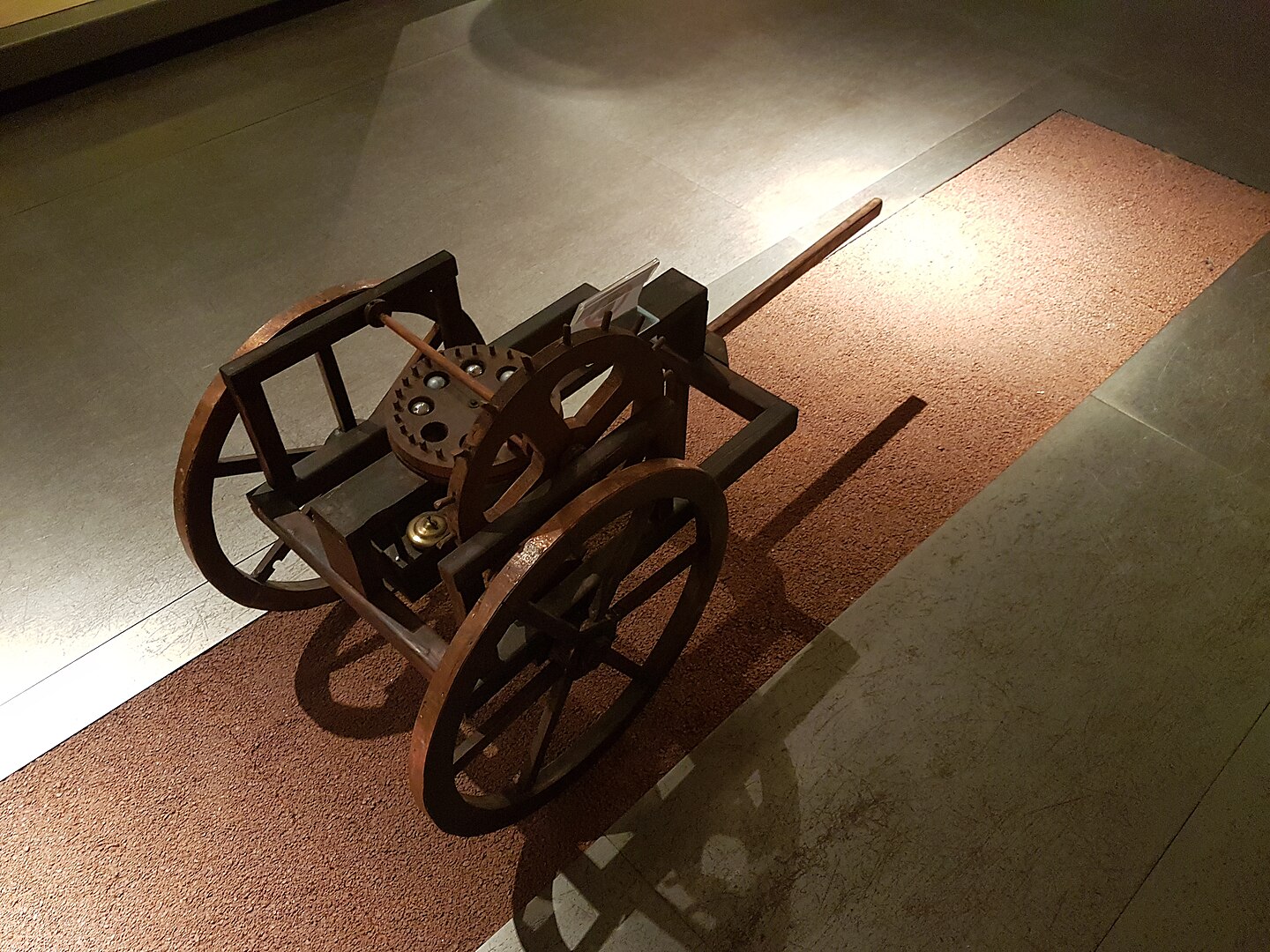 Gts-tg, CC BY-SA 4.0, Wikimedia Commons
Gts-tg, CC BY-SA 4.0, Wikimedia Commons
The Suspension Bridge
From what historians can deduce, ancient Chinese engineers built the first suspension bridges during the Han Dynasty, which began around 200 BC. Starting as simple rope bridges made solely from vines, they quickly evolved into structures consisting of wooden planks suspended by cables.
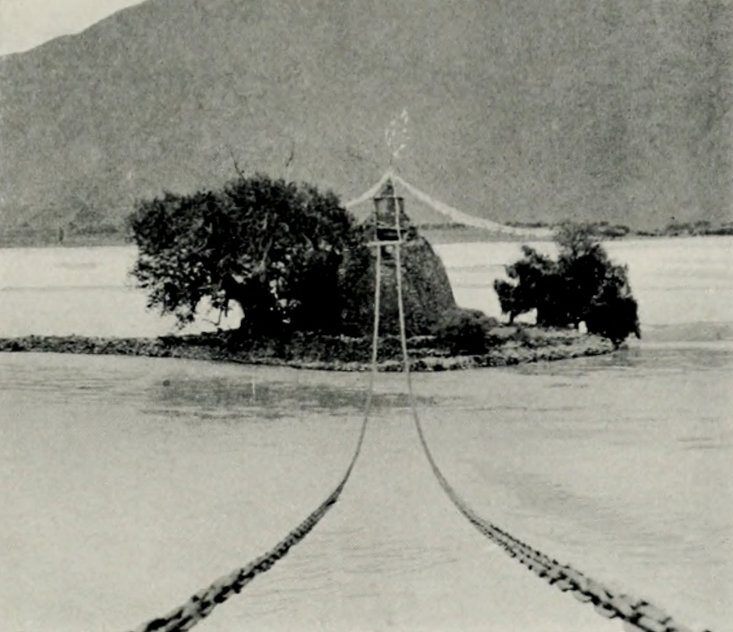 Edmund Candler, Wikimedia Commons
Edmund Candler, Wikimedia Commons
The Ramp
While historians are unsure where exactly the basic structure of a ramp originated, it’s widely believed to have been in ancient Egypt. One of the earliest possible recorded ramp usages was during Pharaoh Khufu’s rule between 2589 BC and 2566 BC, when the Great Pyramid of Giza was constructed. Of course, there were many forms of architecture in the ancient world.
 PBS, NOVA, Decoding the Great Pyramid (2019)
PBS, NOVA, Decoding the Great Pyramid (2019)
Lighthouses
Another famous first belongs to Egypt, in the form of one of the seven wonders. While historians have speculated about other earlier archaeological examples, the Lighthouse of Alexandria is widely accepted as history’s first lighthouse, built close to 280 BC.
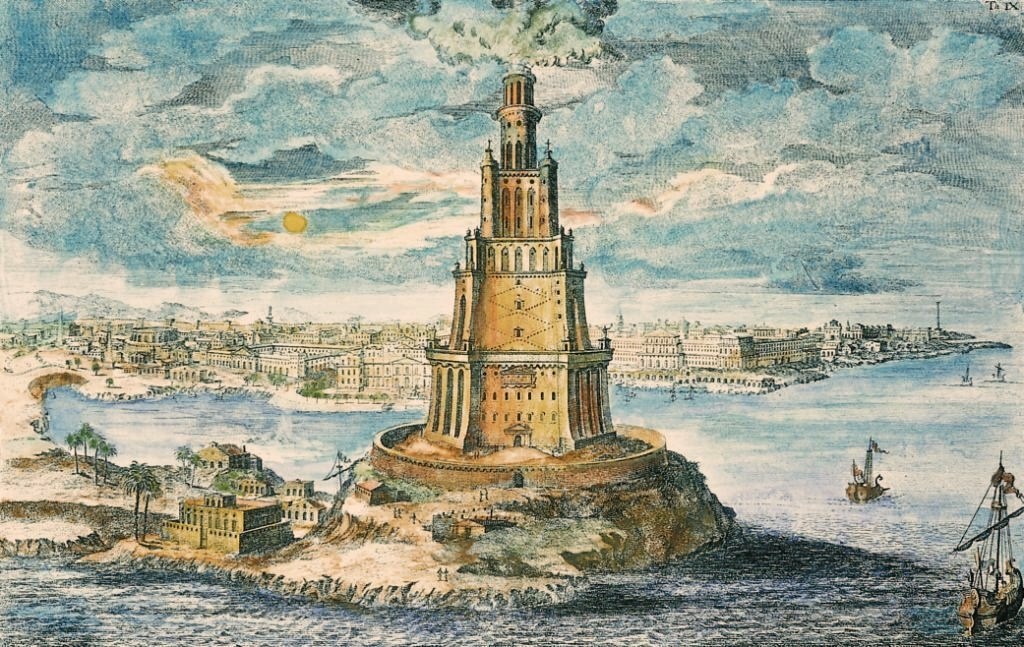 Johann Bernhard Fischer von Erlach, Wikimedia Commons
Johann Bernhard Fischer von Erlach, Wikimedia Commons
Fire-Setting
Ancient Egypt also made leaps in everyday labor, such as the mining industry, with Diodorus Siculus first mentioning fire-setting around 60 BC. He detailed a technique where the Egyptians would heat the wall of a mine with fire before splashing it with liquid, causing it to crumble. Furthermore, it wasn’t just mining that saw technological increases.
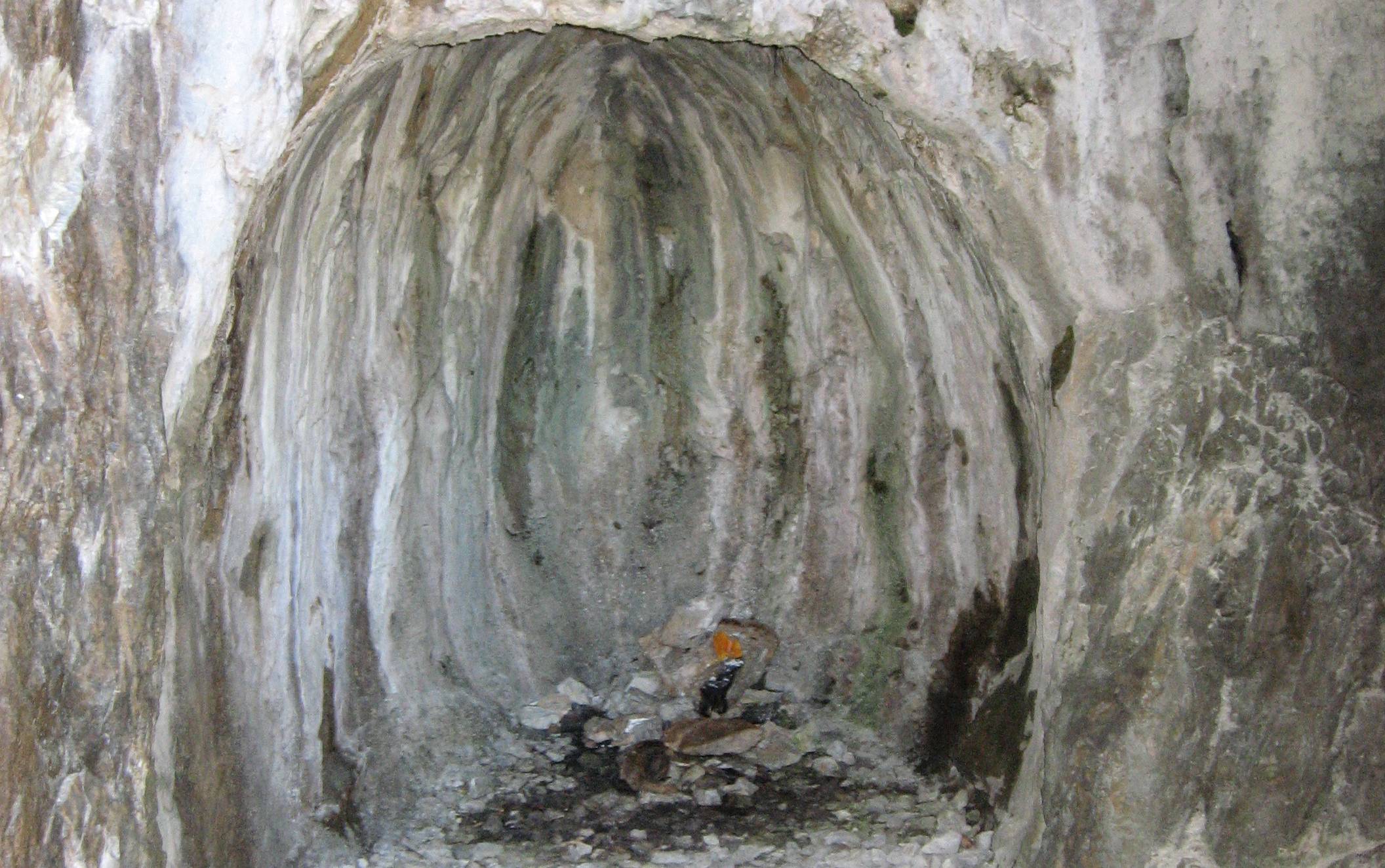 Andreas G. Heiss, CC BY 3.0, Wikimedia Commons
Andreas G. Heiss, CC BY 3.0, Wikimedia Commons
The Vallus
As the oldest occupation in history, farming has seen countless advancements, including early on with the Vallus, as written about by Pliny the Elder in the first century. This invention, which came from the Treveri people, was a mechanical harvester usually drawn by horses or other work animals. Naturally, many advancements focused on farming.
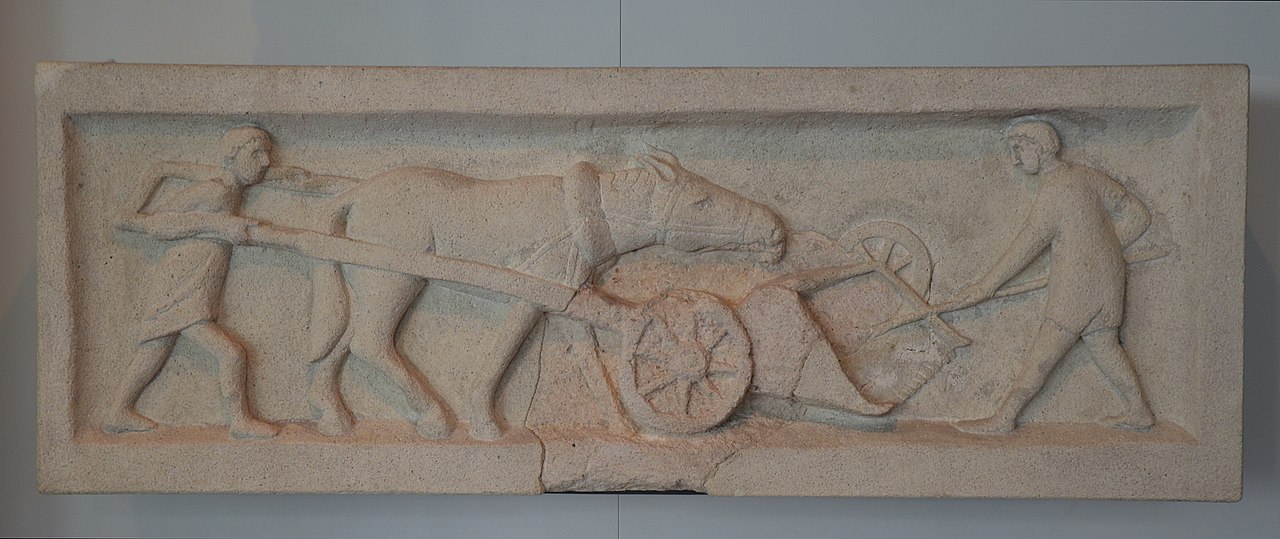 Carole Raddato, CC BY-SA 2.0, Wikimedia Commons
Carole Raddato, CC BY-SA 2.0, Wikimedia Commons
Irrigation
One of the most influential man-made developments in history was the process of irrigation, which allowed humanity to control the amount of water used for agriculture. While there’s no precise inventor, it’s believed that the ancient Mesopotamians started the practice. Specifically, many believe those in the Choga Mami area around 6000 BC were the first to irrigate using canals.
The Jerwan Aqueduct
Now in ruins, historians consider the Jerwan Aqueduct to be the oldest aqueduct in history, built sometime between 703 BC and 690 BC by Sennacherib, King of Assyria. Stories say this behemoth fed waters to the legendary Hanging Gardens of Babylon. Surprisingly, the ancient world was full of water treatment systems.
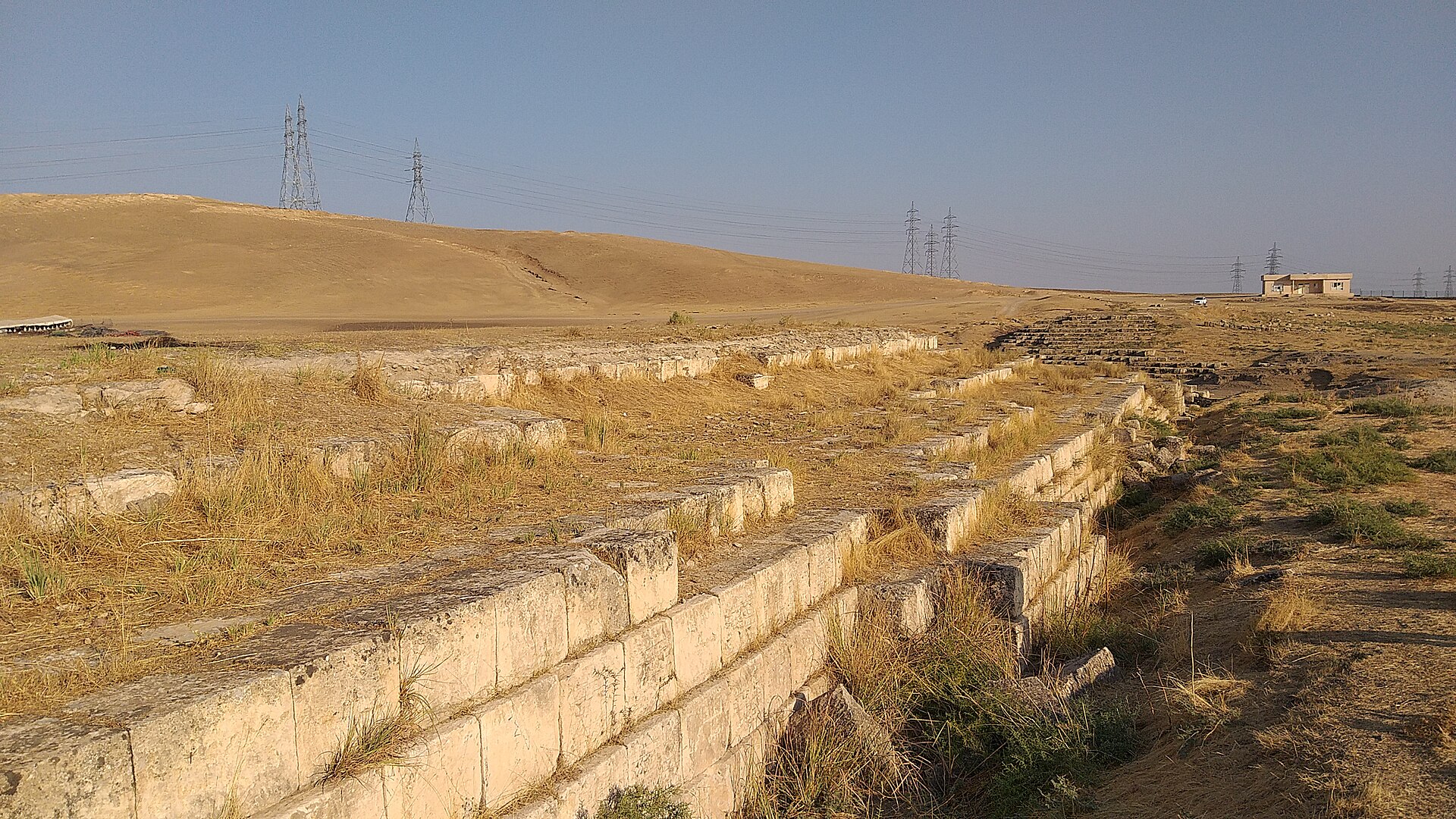 IbrahimKocher Duhok, CC BY-SA 4.0, Wikimedia Commons
IbrahimKocher Duhok, CC BY-SA 4.0, Wikimedia Commons
The Qanat
Qanat systems, which originated in Persia around the first millennium BC, connect several wells to underground canals that deliver water for irrigation and other purposes. Shockingly, one qanat in Gonabad, Iran, is still largely in use despite being around 2,700 years old. But people had developed ingenious water collection methods even earlier than that.
 Zereshk, CC BY-SA 3.0, Wikimedia Commons
Zereshk, CC BY-SA 3.0, Wikimedia Commons
The Shadoof
The Mesopotamian Shadoof acted like a basic crane with a bucket at the end that lifted water from its source onto land. While depicted in accounts as early as the 23rd century BC, some believe their invention occurred a century earlier. Beyond this, the ancient world would later see water used for many personal privileges.
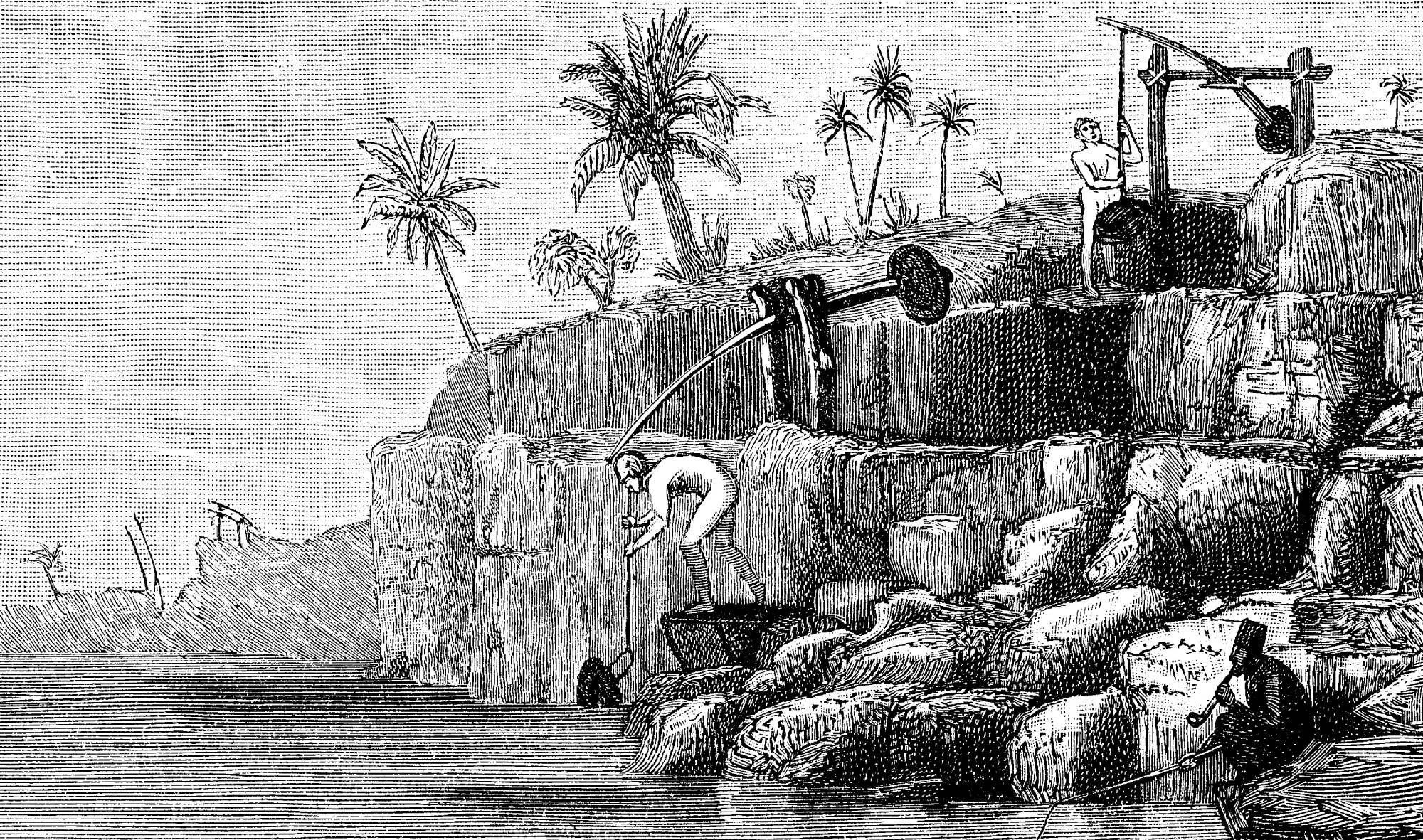 Bildagentur-online, Getty Images
Bildagentur-online, Getty Images
Public Baths
Public bathhouses have been a popular aspect of cultures across the globe and throughout history. Common examples include the bathhouses of ancient Rome, but even before then, the Indus Valley was home to the Great Bath in about 2500 BC. Constructed of baked brick, most theories point to this large bath being religiously significant.
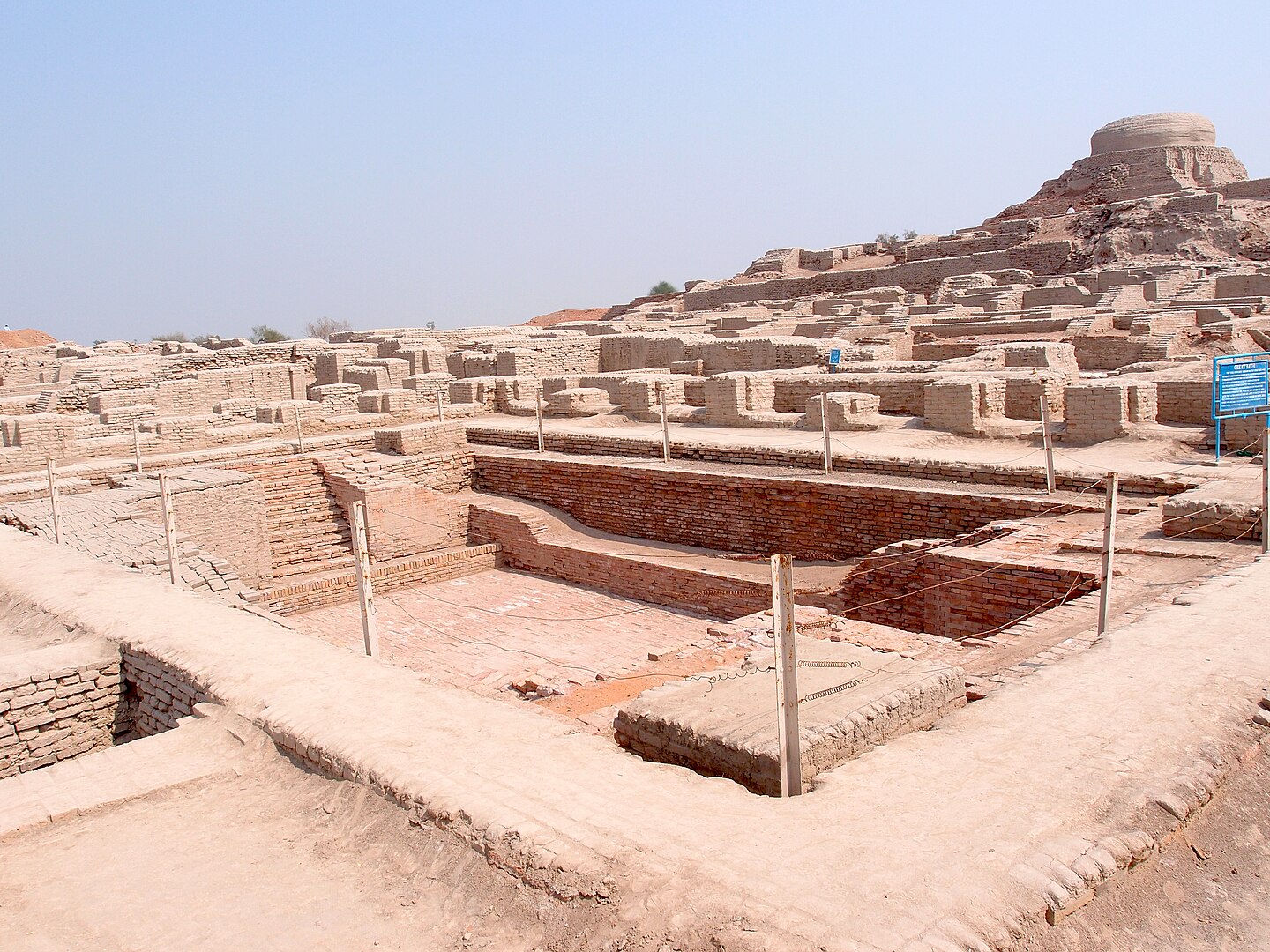 Saqib Qayyum, CC BY-SA 3.0, Wikimedia Commons
Saqib Qayyum, CC BY-SA 3.0, Wikimedia Commons
Showers
Although humanity had similar bathing processes earlier, it wasn’t until ancient Greece that people developed what is called a shower today. Thanks to lead piping, the ancient Greeks could both draw water into and drain it from their shower rooms. At the same time, some early water innovations were more for entertainment.
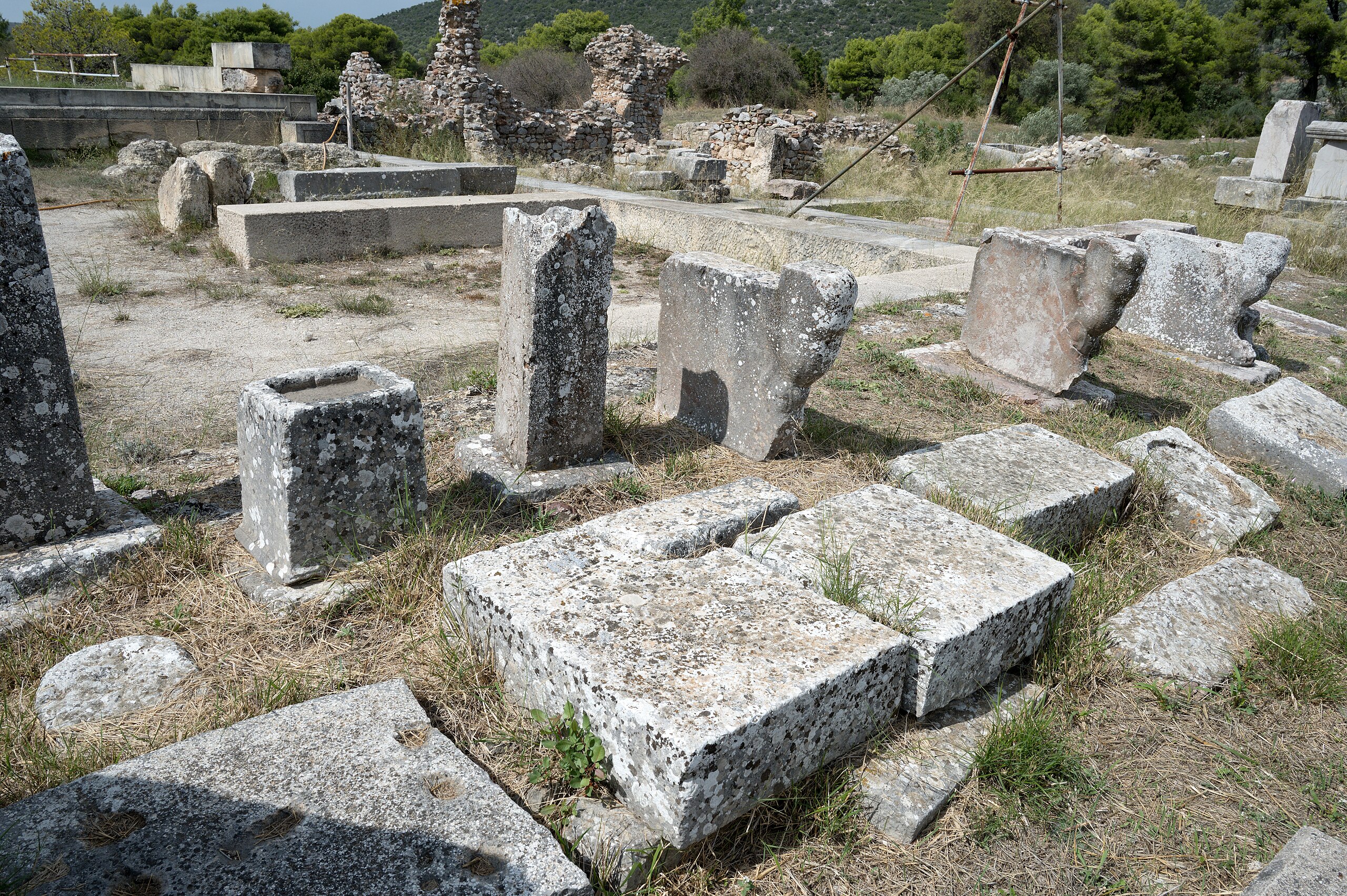 Zde, CC BY-SA 4.0, Wikimedia Commons
Zde, CC BY-SA 4.0, Wikimedia Commons
The Water Organ
One of the most fascinating musical instruments of the ancient world is the water organ, which dates back to at least the third century BC. Using either a man-made or natural source, water would feed into the instrument to push air through its pipes and make music, acting similarly to a modern-day organ.
 Nacéra Benseddik., CC BY-SA 1.0, Wikimedia Commons
Nacéra Benseddik., CC BY-SA 1.0, Wikimedia Commons
Diving Bells
Even in the ancient days, people needed to dive underwater for long spans of time, and thankfully they thought of diving bells early on. First mentioned in the fourth century BC, Aristotle detailed their use as a means for divers to not run out of air. On the other hand, some early inventions focused on when those at sea came back.
 Unknown author, Wikimedia Commons
Unknown author, Wikimedia Commons
Dry Docks
Hellenistic workers used this method to build and maintain their ships, just like modern-day dry docking. Around 200 BC, Athenaeus of Naucratis described a shockingly similar process, which would be the oldest mention of a dry dock. This mentioned large trenches that could fill with water to bring boats in and out, then drain to set them on working beams.
 Unknown author, Wikimedia Commons
Unknown author, Wikimedia Commons
The Screw Pump
Today, screw pumps are common in many industries and appliances, but they have a surprisingly long history. Earlier than the third century BC, Egypt implemented the first version of a screw pump as a way to retrieve water from the Nile. On the other hand, a later invention would use a different form of water for rotation.
 Zdravko Pečar, CC BY-SA 4.0, Wikimedia Commons
Zdravko Pečar, CC BY-SA 4.0, Wikimedia Commons
The Aeolipile
Some consider the Aeolipile one of Hero of Alexandria's many inventions. However, the Roman architect Vitruvius mentioned it even earlier, in the first century BC. Whoever truly invented it created the first steam turbine, but it was likely no more than a party trick at the time.
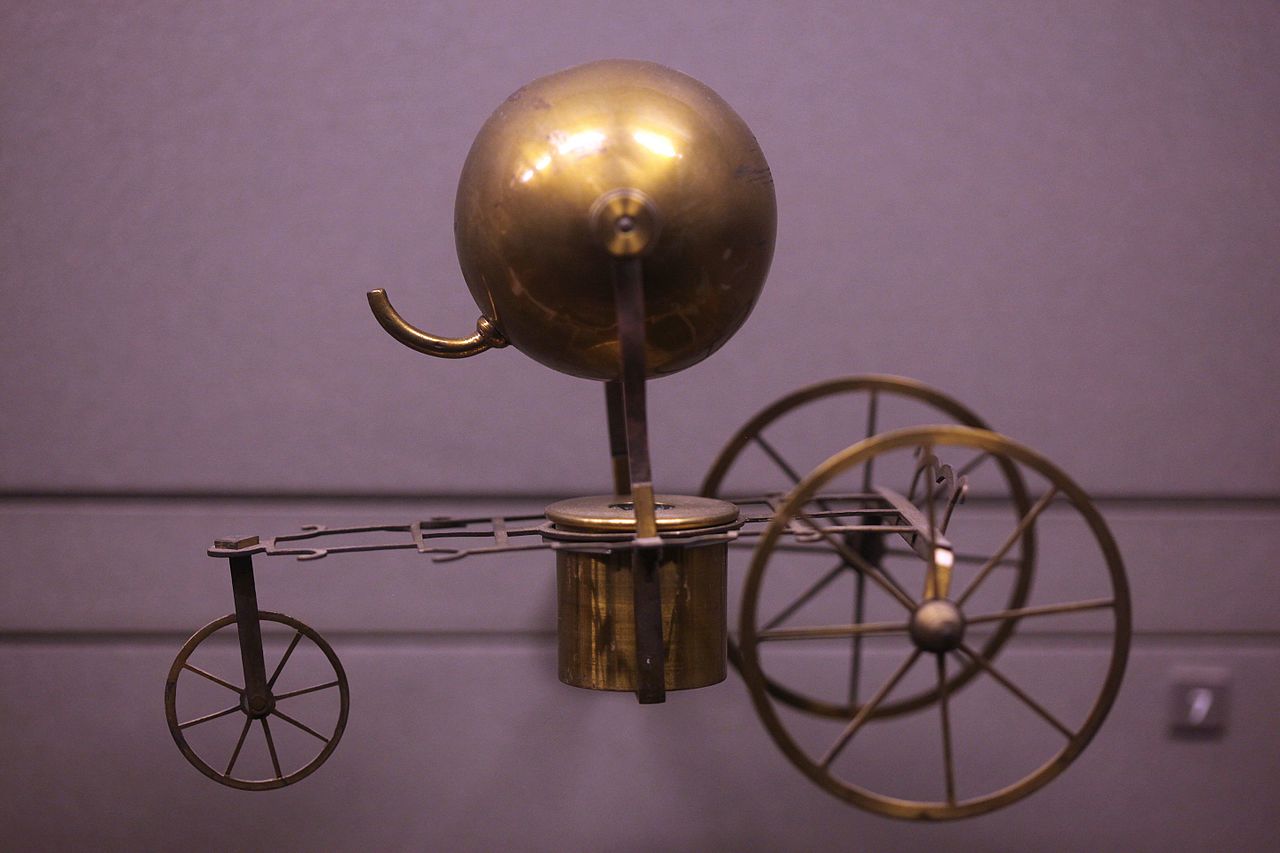 Rama, CC BY-SA 3.0 FR, Wikimedia Commons
Rama, CC BY-SA 3.0 FR, Wikimedia Commons
The Baghdad Battery
Since many regard this device as more theory than fact, the concept arose to explain three artifacts discovered dating back to Persia between AD 224 and AD 640. Some believed this collection including a copper tube, an iron rod, and a ceramic pot hinted at early electricity or power generation. Of course, many other cultures simply used what was at hand for power.
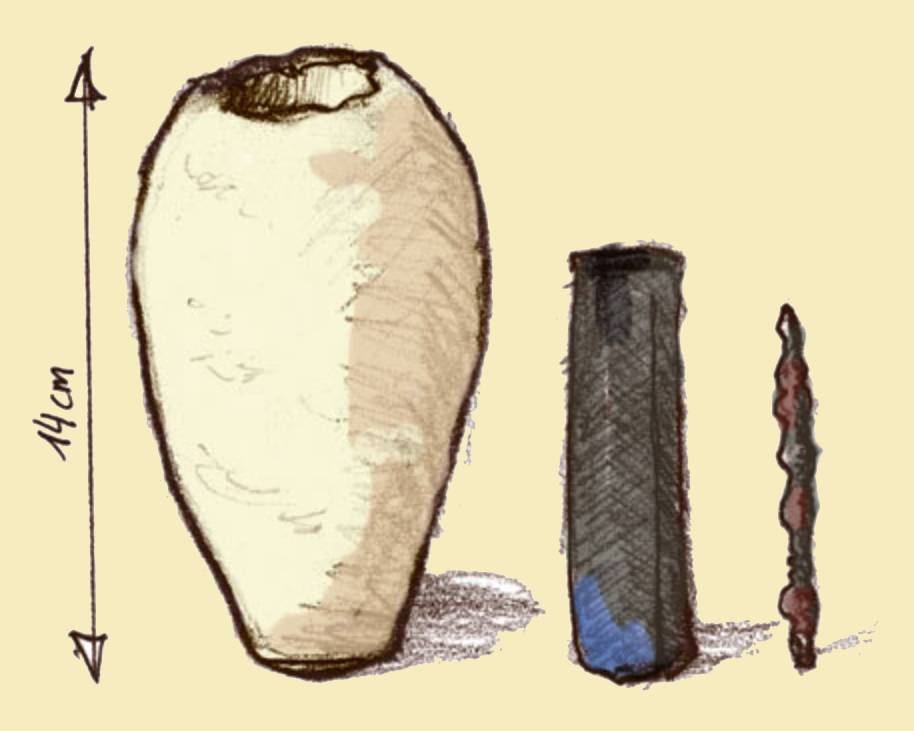 Ironie, CC BY-SA 2.5, Wikimedia Commons
Ironie, CC BY-SA 2.5, Wikimedia Commons
Natural Fuel
Around 400 BC, natural Earth gases were first used in China to boil seawater and extract salt. This advancement came about after ancient Chinese drillers discovered the natural gases, which were later harnessed by being carried through bamboo pipelines.
Gunpowder
While the exact year is unknown, the invention of gunpowder came out of ancient China in the first millennium. While it’s widely accepted that this happened in the 9th century, Chinese alchemist Wei Boyang previously mentioned a similar substance in AD 142. With gunpowder, ancient Chinese scientists developed more lethal designs.
The Fire Arrow
In ancient China, the first rocket propelled by gunpowder was called a “fire arrow,” but its origins aren’t clear. Historians can’t decide who invented the rocket or when, but the earliest possibility is in AD 969 by Feng Zhisheng. Aside from their rockets, the armies of ancient China had many other dangerous tools.
The Crossbow
Easily one of the coolest handheld advancements in combat is the Chinese invention of the crossbow, having been around for quite some time. The first account of its usage was during the Battle of Ma Ling in 341 BC, but it was created 200 years earlier by Ch'in Shih. Scaling up, the Romans had a very similar construct.
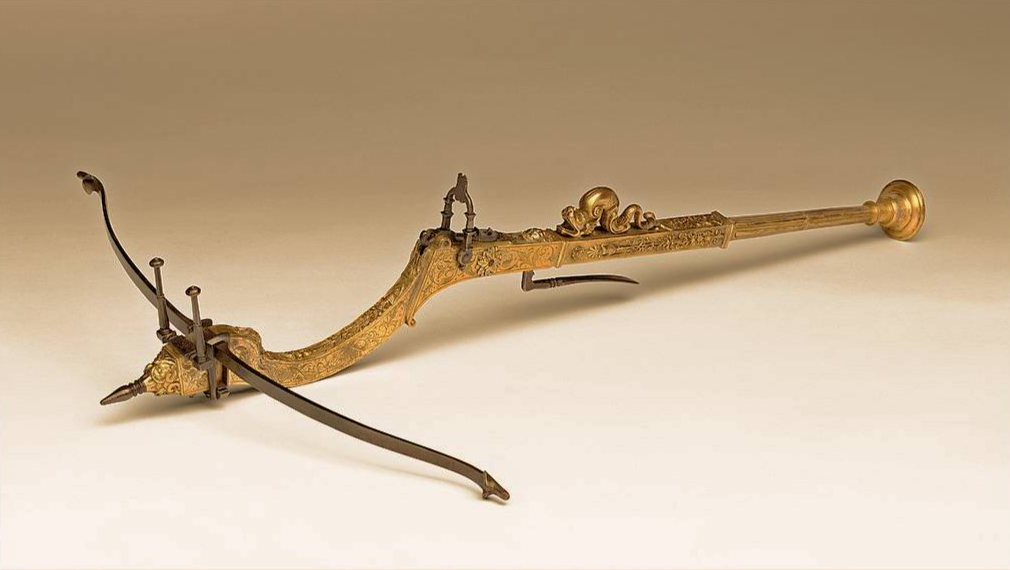 Metropolitan Museum of Art, CC0, Wikipedia Commons
Metropolitan Museum of Art, CC0, Wikipedia Commons
Ballistae
Historians believe the earliest ballista to have originated in 400 BC, but a few decades later, the rise of Philip II of Macedon and his son, Alexander the Great, saw it improved and put to heavy use. Ballistae, which looked like giant, mounted crossbows, were primarily used for sieges and could fire large bolts or stones.
 Pearson Scott Foresman, Wikimedia Commons
Pearson Scott Foresman, Wikimedia Commons
The Onager
Another siege engine, the onager was a type of catapult used early on between the fourth and sixth centuries, likely created in Rome around the third century BC. Like the ballista, it could fire both large missiles and stones. However, it was also much more unwieldy, with its size and heft making it difficult to maneuver. Alternatively, some siege devices were more defensive.
 FunkBrothers, CC BY-SA 2.0, Wikimedia Commons
FunkBrothers, CC BY-SA 2.0, Wikimedia Commons
The Archimedes Claw
Archimedes devised this as an alternative to catapults or other common siege engines to combat the Romans invading Syracuse in 214 BC. Specifically, the Claw was a crane-like machine intended for ships that got too close, whereupon it could either lift them out of the water or sink them entirely. According to records, it was quite successful.
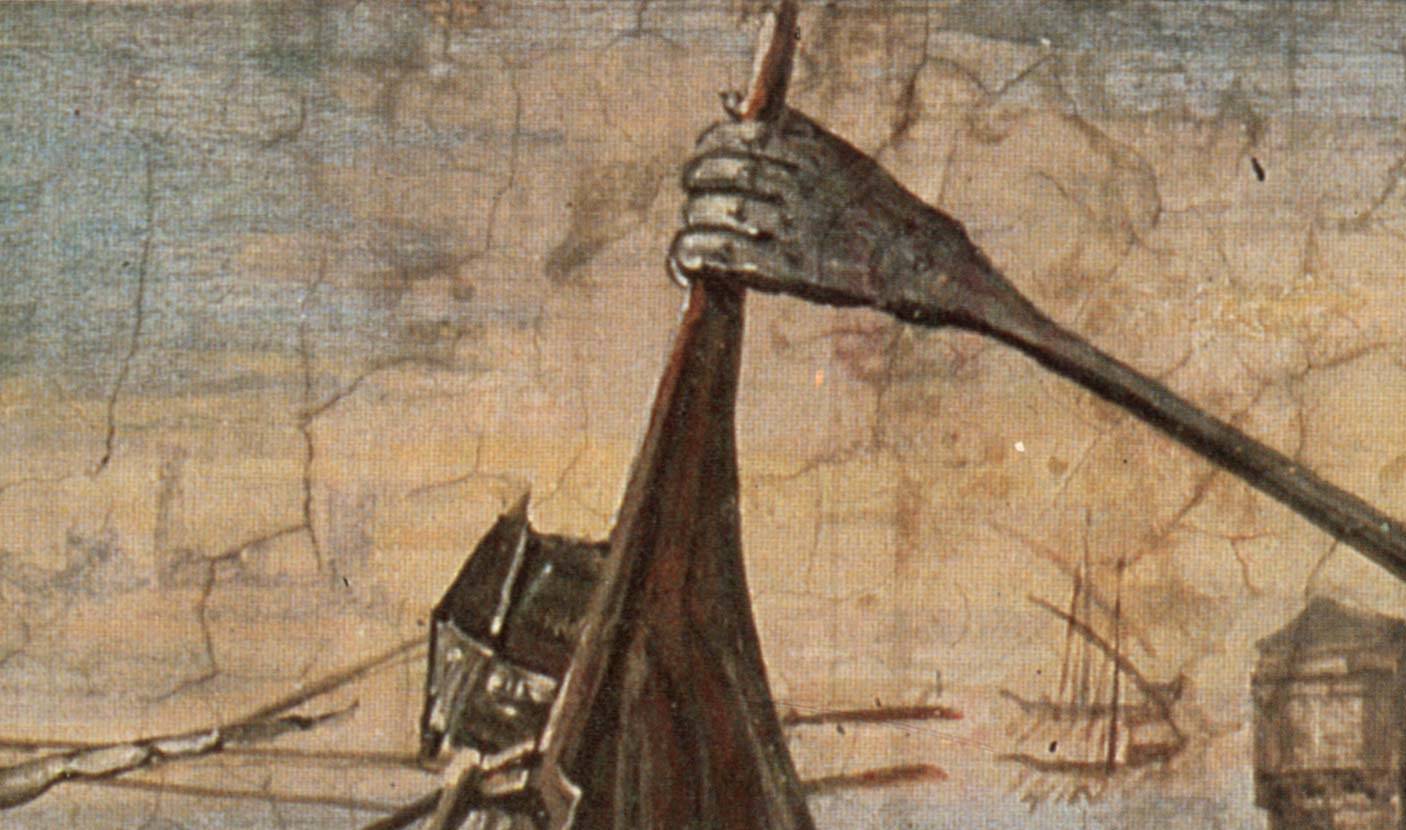 Giulio Parigi, Wikimedia Commons
Giulio Parigi, Wikimedia Commons
Rubber
Rubber may seem like such a mundane part of the modern world, but its uses stretch back thousands of years. Mesoamerican cultures worked with rubber as far back as 1600 BC, taking latex from the rubber tree for many purposes, including sport. However, rubber isn’t the only invention that seems more modern.
 Madman2001, CC BY-SA 3.0, Wikimedia Commons
Madman2001, CC BY-SA 3.0, Wikimedia Commons
Matches
Like today, matches in ancient China served primarily as portable light and heat sources as early as AD 577. Several documents from this time mention “sulfur matches,” which were tiny pinewood sticks that could be lit like candles, since they were infused with the element.
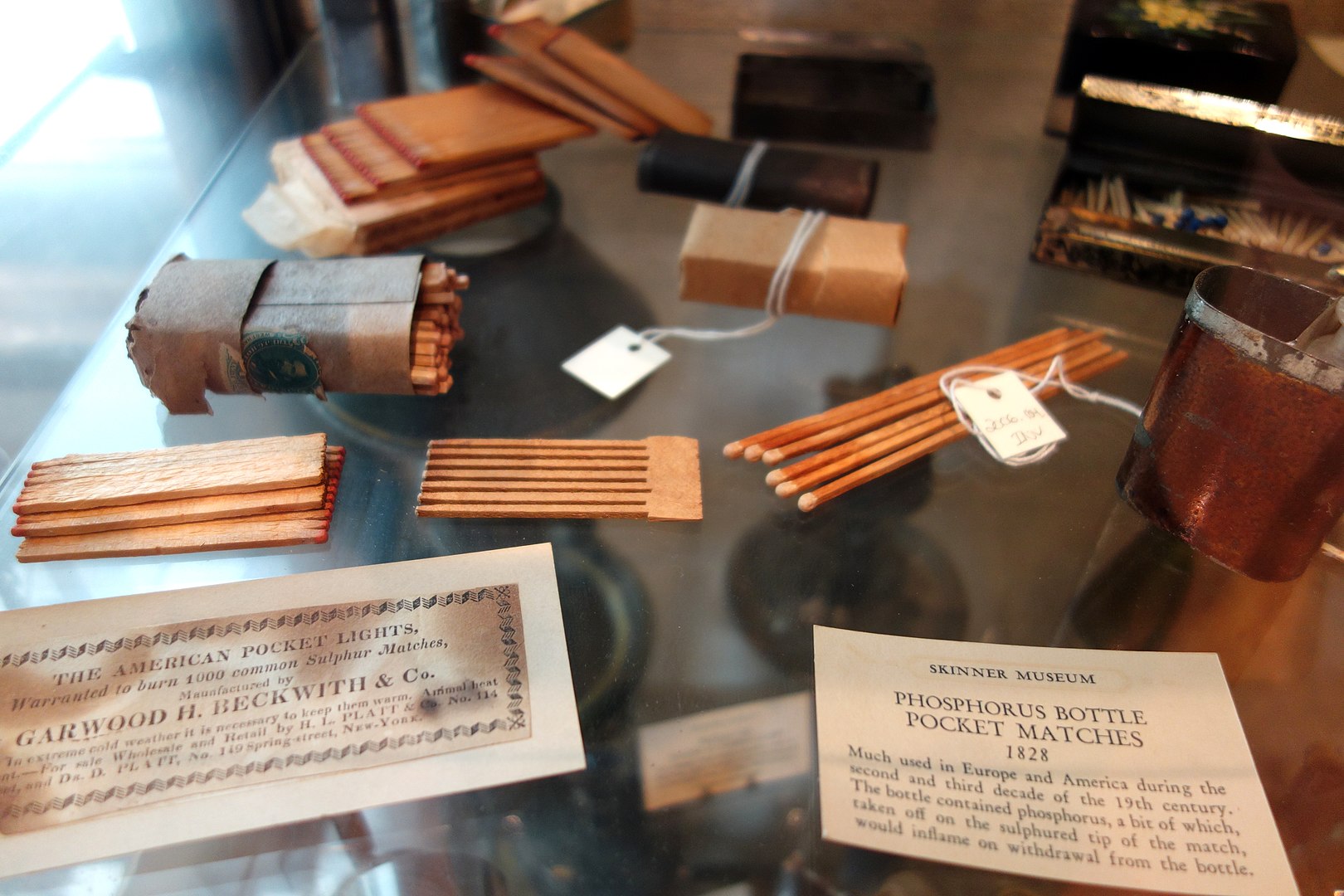 Daderot, CC0 1.0, Wikimedia Commons
Daderot, CC0 1.0, Wikimedia Commons
Central Heating
It’s widely accepted that the modern luxury of central heating started in ancient Greece, for instance in the Temple of Artemis. Such buildings would have underground ducts connected to a room with a fire, which could then disperse the heat throughout the structure. Instead of keeping things warm, the ancient world also had a solution for the opposite.
 Philip Galle, Wikimedia Commons
Philip Galle, Wikimedia Commons
The Yakhchāl
Created by Persian engineers in 400 BC, Yakhchāls consisted of an insulating mortar called sarooj, with exteriors that resembled a peaked dome. These structures primarily stored ice but often could make it as well and were sometimes used to keep food cool.
 Pastaitaken, CC BY-SA 3.0, Wikimedia Commons
Pastaitaken, CC BY-SA 3.0, Wikimedia Commons
The Vending Machine
Another strange invention of Hero of Alexandria’s collection was, for all intents and purposes, a vending machine. Once someone inserted a token, it would fall into a small pan, triggering the dispense of holy water. All this was to stop people from taking too much holy water, as the token would only sit on the pan until the allotted amount was given.
You May Also Like:
What Life Was Like In Ancient Pompeii
25 Fascinating Discoveries Inside The Tomb Of An Ancient Egyptian Doctor
A 780,000-Year-Old Kitchen Shows That Early Humans May Have Eaten Cooked Food
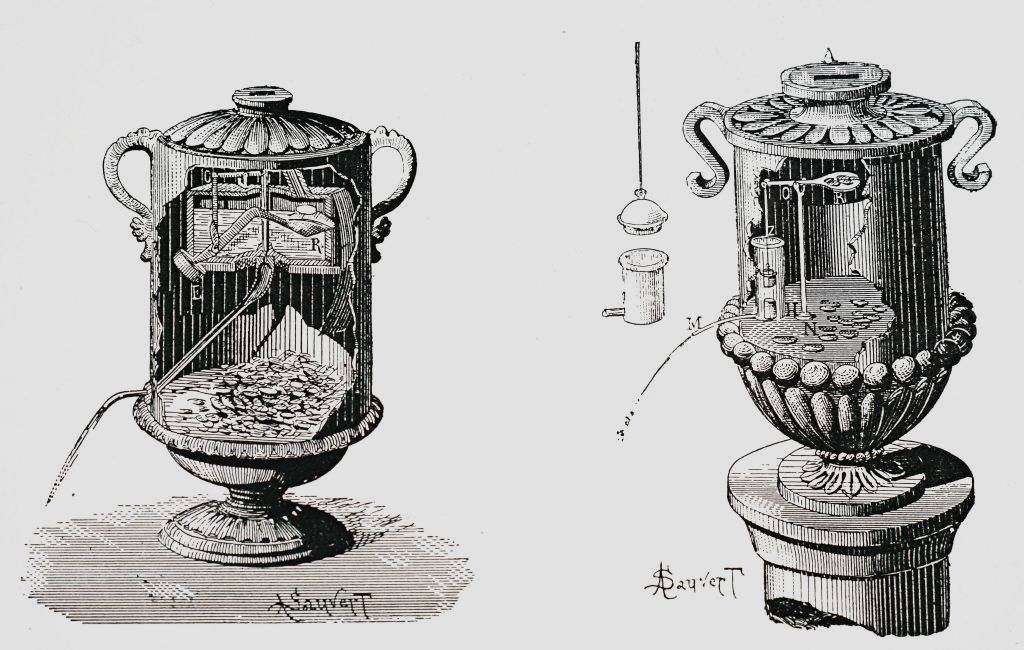 Universal History Archive, Getty Images
Universal History Archive, Getty Images
Sources: 1, 2, 3, 4 ,5 ,6, 7, 8, 9, 10, 11, 12, 13, 14, 15, 16, 17, 18, 19, 20, 21, 22, 23, 24, 25, 26, 27, 28, 29, 30, 31, 32, 33, 34, 35, 36, 37, 38, 39, 40, 41, 42



